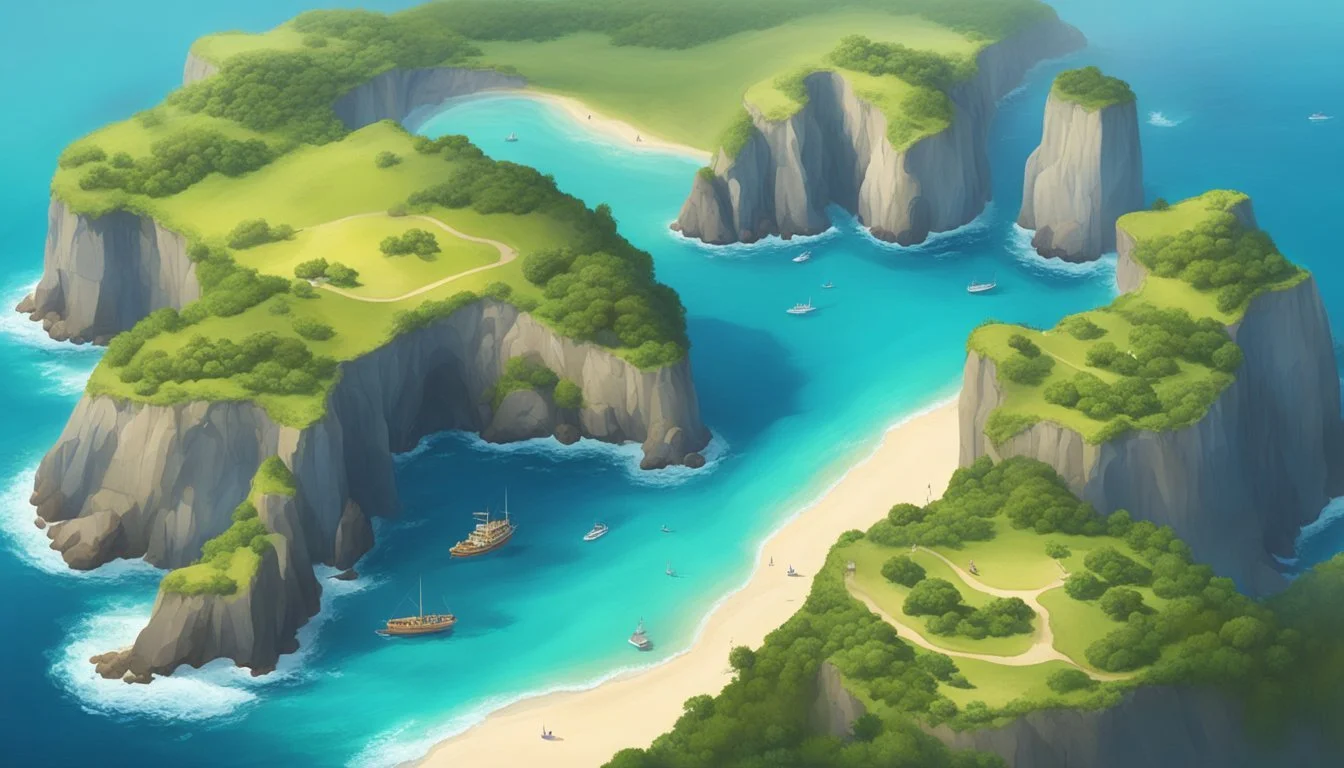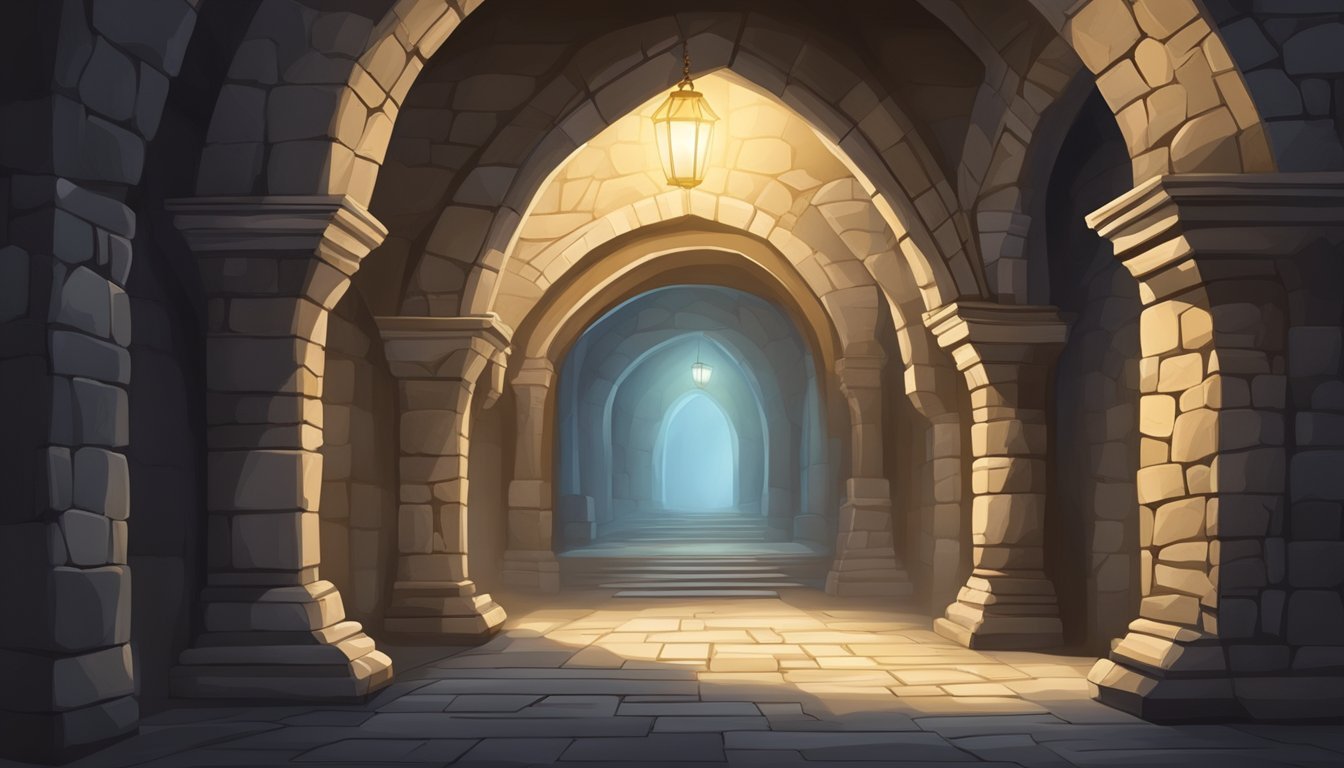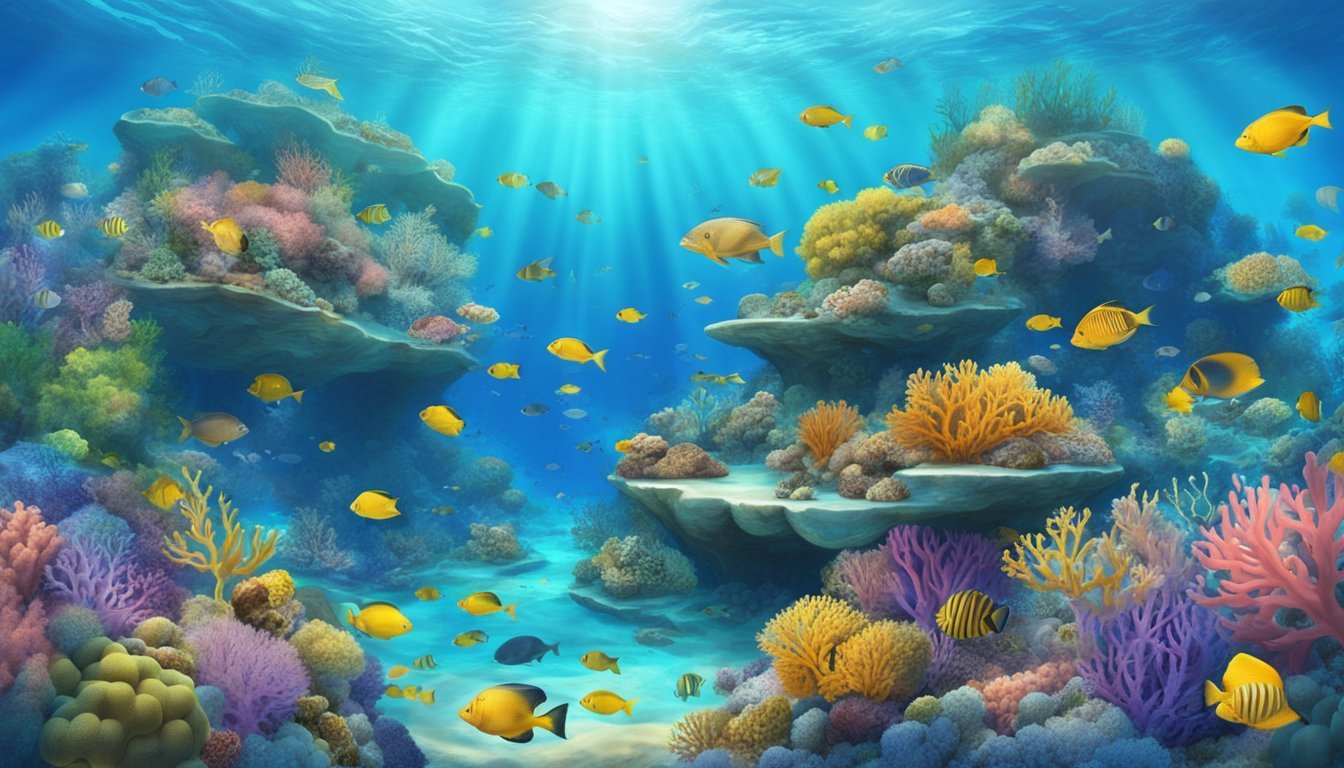7 Captivating Documentaries on Malta
Exploring the Mediterranean Jewel's Rich History and Culture
Malta, a small archipelago in the Mediterranean Sea, boasts a rich history and captivating culture that have inspired numerous filmmakers to document its unique charm. From ancient civilizations to modern-day traditions, the island nation offers a wealth of stories waiting to be told through the lens of documentary filmmaking.
These seven documentaries provide viewers with an in-depth look at Malta's diverse landscapes, historical significance, and vibrant way of life. By exploring topics ranging from underwater habitats to traditional fishing practices, these films offer valuable insights into the island's past and present. Whether you're planning a visit or simply curious about this Mediterranean gem, these documentaries serve as an excellent introduction to the wonders of Malta.
1) "Filfla's Untold Secrets" by John Cassar
John Cassar's documentary "Filfla's Untold Secrets" explores the mysterious uninhabited islet of Filfla, located off Malta's southern coast. The film reveals the island's rich history and ecological significance.
Cassar's work showcases Filfla's unique geological formations and its role as a sanctuary for rare seabirds. The documentary features stunning aerial footage of the island's rugged cliffs and crystal-clear surrounding waters.
Experts interviewed in the film discuss Filfla's past use as a bombing target by the British military. They explain how this practice was halted in 1971, allowing the island's ecosystem to recover.
The documentary highlights ongoing conservation efforts to protect Filfla's delicate environment. It also examines the challenges faced by researchers studying the island's flora and fauna due to limited access.
Cassar's film brings attention to Filfla's archaeological significance, including evidence of prehistoric human activity. The documentary provides viewers with a rare glimpse into this protected natural reserve, typically off-limits to the public.
2) "Passageways of the Knights" directed by Emma Vella
Emma Vella's documentary "Passageways of the Knights" offers a fascinating glimpse into the hidden tunnels and secret passages of Malta's historic fortifications. The film explores the underground network built by the Knights of St. John during their rule of the island.
Vella's camera takes viewers on a journey through dimly lit corridors and forgotten chambers, revealing the intricate engineering behind these centuries-old structures. The documentary highlights the strategic importance of these passageways in defending Malta against invaders.
Interviews with historians and archaeologists provide context and insight into the knights' daily lives and military tactics. The film also showcases recent discoveries made within these subterranean spaces, shedding new light on Malta's rich past.
"Passageways of the Knights" combines stunning visuals of Malta's architecture with expertly crafted reenactments. These scenes bring to life the experiences of the knights who once traversed these hidden routes.
Vella's work not only educates viewers about an often-overlooked aspect of Maltese history but also raises awareness about the preservation of these unique historical sites. The documentary serves as a compelling invitation to explore Malta's underground heritage.
3) "The Siege of Malta: Myth or Reality?" narrated by Alex Sciberras
This documentary explores the famous 1565 Siege of Malta, examining historical evidence to separate fact from fiction. Narrator Alex Sciberras guides viewers through the events that unfolded during the Ottoman Empire's attempt to conquer the island.
The film presents archaeological findings and expert analyses to shed light on the siege's true nature. It investigates the tactics used by both the Ottoman forces and the Knights of St. John who defended Malta.
Sciberras delves into the role of Grand Master Jean Parisot de Valette in organizing the island's defense. The documentary also examines the impact of geography and fortifications on the outcome of the siege.
Eyewitness accounts and historical documents are scrutinized to provide a balanced perspective on the events. The film addresses common myths surrounding the siege and offers evidence-based explanations for certain disputed aspects.
"The Siege of Malta: Myth or Reality?" presents a critical examination of this pivotal moment in Maltese history. It aims to provide viewers with a clearer understanding of the siege's historical significance and its lasting impact on Malta's culture and identity.
4) "Maltese Traditions: A Living Heritage" produced by Claire Micallef
This documentary explores the rich cultural traditions of Malta that have been passed down through generations. Claire Micallef, a respected Maltese filmmaker, captures the essence of the island's living heritage.
The film showcases ancient customs still practiced today, including traditional crafts, music, and festivals. Viewers are treated to scenes of skilled artisans creating intricate lace and filigree jewelry.
Maltese folk music takes center stage, with performances of għana, the island's unique form of folk singing. The documentary also highlights religious processions and village festas that bring communities together.
Micallef interviews elderly Maltese citizens who share their memories of bygone traditions. These personal anecdotes provide valuable insights into the island's cultural evolution.
The film examines how globalization has impacted Malta's traditions. It explores efforts to preserve and revitalize cultural practices that are at risk of being lost.
"Maltese Traditions: A Living Heritage" serves as a visual archive of Malta's cultural identity. It celebrates the resilience of Maltese customs in the face of modernization.
5) "Underwater Malta: Hidden Treasures" by Mark Camilleri
Mark Camilleri's documentary "Underwater Malta: Hidden Treasures" explores the rich maritime history surrounding the Maltese archipelago. The film takes viewers on a captivating journey beneath the Mediterranean waves.
Camilleri and his team of expert divers showcase ancient shipwrecks, some dating back to Roman times. These underwater time capsules offer glimpses into Malta's past as a crucial maritime crossroads.
The documentary highlights the diverse marine life thriving around these submerged relics. Colorful fish and intricate coral formations have transformed the wrecks into vibrant ecosystems.
Cutting-edge underwater filming techniques bring these hidden worlds to life. Viewers experience the thrill of discovery alongside the exploration team.
"Underwater Malta" also addresses conservation efforts to protect these invaluable historical sites. The film raises awareness about the importance of preserving Malta's underwater heritage for future generations.
Camilleri's work sheds light on ongoing archaeological research in Maltese waters. The documentary showcases how modern technology aids in uncovering and studying these long-lost treasures.
6) "Malta's Lost Architecture" with narration by Sarah Borg
"Malta's Lost Architecture" explores the island's vanished historical structures. Narrated by Sarah Borg, this documentary sheds light on buildings lost to time, war, and development.
The film examines ancient Phoenician and Roman ruins that once dotted Malta's landscape. It reveals how many of these archaeological treasures were destroyed or built over during centuries of occupation and modernization.
Borg guides viewers through digital reconstructions of medieval fortifications and palaces. These recreations offer glimpses of Malta's architectural heritage that no longer exists in physical form.
The documentary also investigates the destruction caused by World War II bombing raids. It showcases before-and-after comparisons of Valletta's grand buildings and the extensive damage they suffered.
Interviews with historians and architects provide context on Malta's evolving urban landscape. The film discusses ongoing efforts to preserve remaining historical structures and the challenges faced in balancing progress with heritage conservation.
7) "Islands of the Blue: Malta's Marine Life" directed by Luke Grech
Luke Grech's documentary "Islands of the Blue: Malta's Marine Life" offers a stunning exploration of the underwater world surrounding the Maltese archipelago. The film showcases the diverse marine ecosystems found in the Mediterranean waters near Malta.
Grech's camera captures vibrant coral reefs, seagrass meadows, and rocky underwater landscapes. Viewers are treated to close-up footage of colorful fish species, including groupers, bream, and wrasses that inhabit these waters.
The documentary highlights the importance of Malta's marine protected areas in preserving biodiversity. It features interviews with local marine biologists and conservationists who discuss ongoing efforts to protect these fragile ecosystems.
"Islands of the Blue" also addresses the challenges faced by Malta's marine life, such as pollution and overfishing. The film presents potential solutions and emphasizes the role of sustainable tourism in supporting conservation efforts.
Grech's work serves as both an educational tool and a call to action. It encourages viewers to appreciate and protect the rich marine life found in Maltese waters, showcasing the beauty that lies beneath the surface of the Mediterranean Sea.
The Cultural Impact of Malta's History
Malta's rich history has profoundly shaped its culture, leaving lasting imprints on art, architecture, and daily life. Two major periods stand out for their significant influence on Maltese society and traditions.
Influence of the Knights of St. John
The Knights of St. John ruled Malta from 1530 to 1798, transforming the island's landscape and culture. They introduced Baroque architecture, exemplified by the magnificent St. John's Co-Cathedral in Valletta. This ornate style became a hallmark of Maltese buildings.
The Knights also bolstered Malta's military defenses, constructing impressive fortifications like Fort St. Elmo. These structures remain iconic landmarks today.
Their influence extended to art, with many churches and palaces adorned with paintings and sculptures commissioned by the Order. The Knights' legacy is evident in Malta's religious festivals, military traditions, and heraldic symbols still used in official contexts.
British Colonization
British rule from 1800 to 1964 left an indelible mark on Maltese society. The English language became widespread, now an official language alongside Maltese. This bilingualism has shaped Malta's education system and business practices.
British architectural influences are visible in Neo-classical and Victorian buildings, particularly in Valletta and Sliema. The introduction of afternoon tea and certain sports like cricket and football also reflect this period.
The British military presence during World War II strengthened Malta's strategic importance and national identity. This era is commemorated in museums and memorials across the island, preserving the memory of Malta's wartime resilience.
Malta's Unique Natural Landscapes
Malta's small size belies its remarkable ecological diversity and distinctive geological features. The archipelago boasts a rich tapestry of Mediterranean habitats and dramatic rock formations shaped over millennia.
Mediterranean Biodiversity
Malta's flora and fauna reflect its position at the heart of the Mediterranean. The islands harbor over 1,000 plant species, including rare endemic varieties found nowhere else. Vibrant wildflower meadows burst with color each spring, featuring orchids, poppies, and the national plant - the Maltese Rock-centaury.
The surrounding waters teem with marine life. Colorful fish, octopuses, and sea turtles inhabit the rocky reefs and seagrass meadows. Dolphins and whales occasionally visit Malta's seas.
Birds play a crucial role in Malta's ecosystems. The islands serve as an important stopover for migratory species crossing the Mediterranean. Filfla, a tiny uninhabited islet, hosts significant colonies of seabirds like storm petrels and shearwaters.
Geological Formations
Malta's landscape bears the imprint of ancient geological processes. Limestone cliffs dominate the coastline, sculpted by wind and waves into dramatic forms. The iconic Azure Window on Gozo stood as a natural arch until its collapse in 2017.
Underground, a network of caves and grottoes adds another dimension to Malta's geology. The Blue Grotto near Żurrieq dazzles visitors with its luminous waters reflecting sunlight off the white sand bottom.
Inland, the terrain undulates with gentle hills and valleys. Fertile plains support agriculture, while rocky garrigue areas harbor drought-resistant shrubs and herbs. The Dingli Cliffs on Malta's western coast offer breathtaking panoramas, rising 250 meters above the sea.







